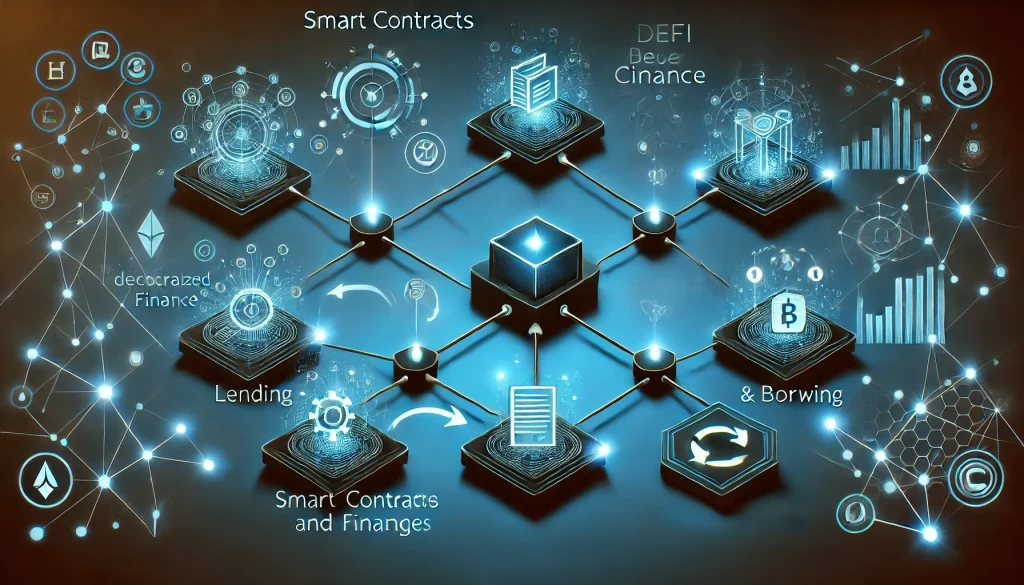
Smart contracts have become a game-changer in the world of economic analysis. These self-executing digital agreements eliminate the need for intermediaries, offering a more secure, transparent, and efficient way to automate transactions and ensure compliance. From decentralized finance (DeFi) applications to non-fungible tokens (NFTs), smart contracts are revolutionizing various sectors, allowing industry professionals to streamline processes and reduce operational costs.
In economic analysis, the use of smart contracts can lead to faster transactions, improve data integrity, and foster trust between parties. This guide will walk you through how to use smart contracts effectively for economic purposes, touching on their benefits and how they relate to key concepts like DeFi, NFTs, and the Solidity programming language.
Materials or Tools Needed
Before diving into the steps, you’ll need the following tools or prerequisites to deploy a smart contract successfully:
- Solidity: A programming language used to write smart contracts on Ethereum.
- Ethereum Testnet: For deploying and testing smart contracts without real monetary stakes.
- MetaMask: A browser extension for managing Ethereum wallets and interacting with smart contracts.
- Remix IDE: An integrated development environment (IDE) for writing and deploying Solidity-based contracts.
Step-by-Step Instructions
Step 1: Understand the Basics of Smart Contracts
Before you start using smart contracts in economic analysis, it’s crucial to understand their core functionality. A smart contract is a piece of code stored on a blockchain that runs automatically when certain conditions are met. For instance, it can release funds when a service is completed or verify ownership in NFT transactions. This automation minimizes human error, ensuring greater accuracy in economic analysis.
Step 2: Set Up Your Ethereum Wallet and Test Environment
Next, you’ll need to create an Ethereum wallet using MetaMask. This wallet will enable you to interact with smart contracts on the blockchain. Once you have MetaMask set up, you’ll also need to get test Ether (ETH) from a faucet to run your contract on the Ethereum testnet. The testnet is a safe environment where you can practice deploying and using contracts without risking real cryptocurrency.
Step 3: Write Your Smart Contract in Solidity
Solidity is the main programming language used to write Ethereum smart contracts. Begin by opening Remix IDE, a browser-based tool, and start writing the contract logic. You’ll define variables, functions, and conditions under which the contract will execute. For example, you can write a smart contract that automatically transfers funds once two parties agree on a specific economic transaction.
Ensure your code is free of errors and vulnerabilities by using tools like MythX for automated security analysis.
Step 4: Deploy and Test Your Smart Contract
Once you’ve written the contract, deploy it on the Ethereum testnet. This step requires you to send your smart contract code to the blockchain. After deployment, test the contract to make sure it behaves as expected. For example, you can simulate various conditions to check if the contract correctly handles the transfer of assets or data integrity within an economic framework.
Step 5: Integrate the Smart Contract with Economic Models
After successfully deploying and testing the contract, the next step is integrating it into your economic analysis. Smart contracts can automate data collection, process payments in DeFi systems, and even facilitate the issuance of NFTs. For example, you can use smart contracts to trigger automated payouts in insurance models or manage supply chains by validating data in real-time, leading to better economic outcomes.
Do’s and Don’ts of Using Smart Contracts

Do’s:
- Do carefully test your contract before deploying it on the mainnet. Bugs or vulnerabilities can result in irreversible consequences, such as the loss of funds.
- Do ensure clarity in the contract terms. Smart contracts execute based on the conditions you set, so ambiguity can lead to unintended outcomes.
- Do leverage the decentralized nature of smart contracts. This feature is especially useful in economic models that require transparency and trust between multiple parties.
Don’ts:
- Don’t hard-code sensitive information into your contract. Storing private keys or sensitive data within the contract can lead to security risks.
- Don’t overlook gas fees. Each interaction with a smart contract on Ethereum requires gas (ETH), so be mindful of these costs when running economic models.
- Don’t deploy an untested contract on the mainnet. Always use the testnet to identify and fix potential errors before deploying your contract live.
Conclusion

Smart contracts are transforming the way economic analysis is conducted by automating transactions, ensuring accuracy, and reducing reliance on intermediaries. By following the steps outlined in this guide—understanding the basics, setting up your environment, writing the contract, and testing—you can successfully implement smart contracts in various economic models. With the right precautions, smart contracts can become a powerful tool in improving efficiency and transparency in economic analysis.
FAQ
What is a smart contract in economic analysis?
A smart contract is a self-executing agreement with terms directly written into code. It automates economic transactions when predefined conditions are met, ensuring accuracy and transparency.
How can smart contracts benefit economic analysis?
They reduce the need for intermediaries, lower transaction costs, and ensure real-time data integrity, making them ideal for decentralized finance (DeFi) and other economic models.
What tools do I need to deploy a smart contract?
You’ll need Solidity, MetaMask, Ethereum Testnet, and Remix IDE to write, test, and deploy your smart contract effectively.
